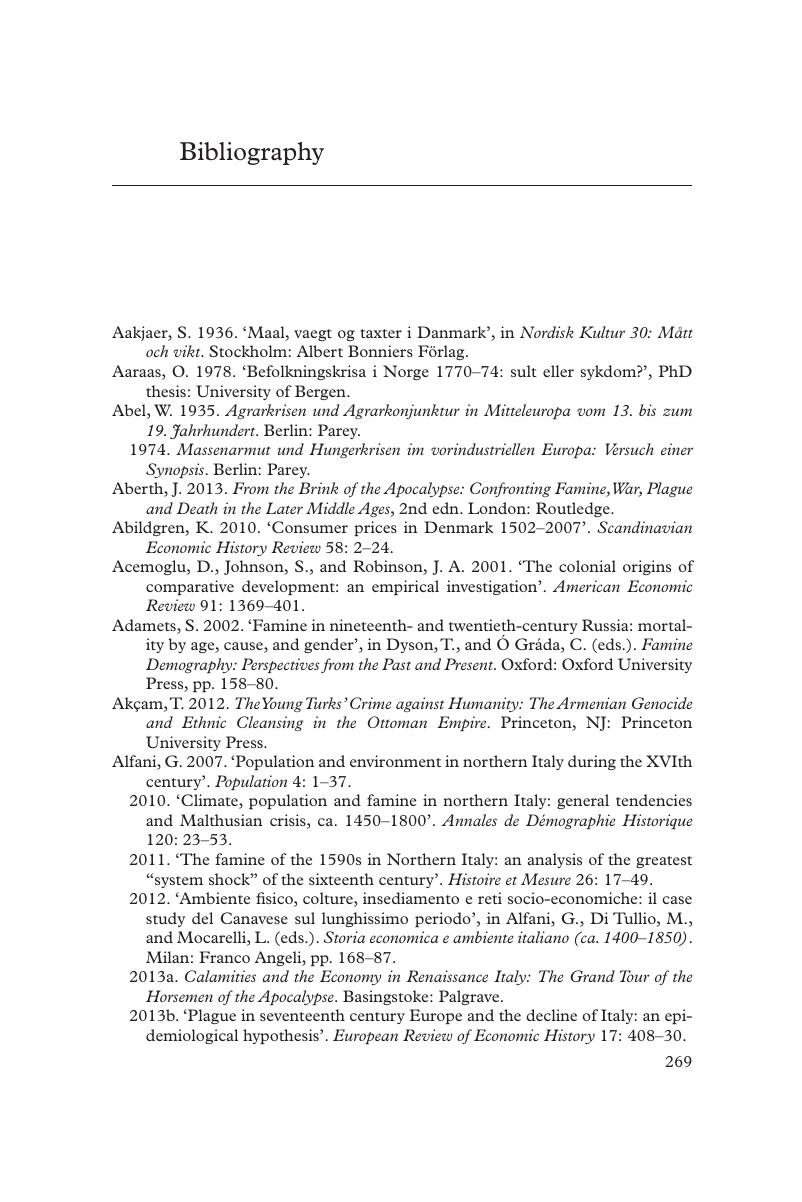Book contents
- Famine in European History
- Famine in European History
- Copyright page
- Contents
- Figures
- Tables
- Contributors
- 1 Famines in Europe: An Overview
- 2 Italy
- 3 Spain
- 4 France
- 5 Germany, Switzerland and Austria
- 6 Low Countries
- 7 Britain
- 8 Ireland
- 9 Nordic Europe
- 10 Eastern Europe (Russia and the USSR)
- 11 The European Famines of World Wars I and II
- Bibliography
- Index
- References
Bibliography
Published online by Cambridge University Press: 05 September 2017
- Famine in European History
- Famine in European History
- Copyright page
- Contents
- Figures
- Tables
- Contributors
- 1 Famines in Europe: An Overview
- 2 Italy
- 3 Spain
- 4 France
- 5 Germany, Switzerland and Austria
- 6 Low Countries
- 7 Britain
- 8 Ireland
- 9 Nordic Europe
- 10 Eastern Europe (Russia and the USSR)
- 11 The European Famines of World Wars I and II
- Bibliography
- Index
- References
Summary

- Type
- Chapter
- Information
- Famine in European History , pp. 269 - 310Publisher: Cambridge University PressPrint publication year: 2017



